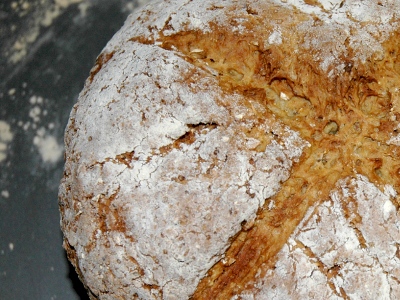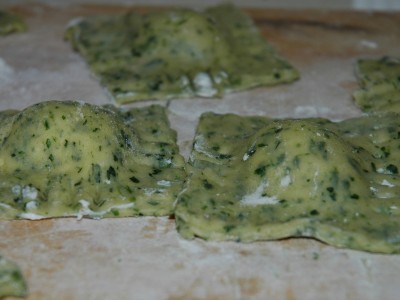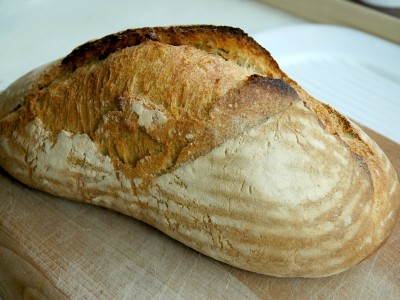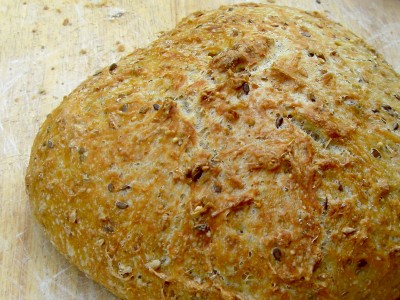Yesterday’s consumables and their packaging
Last week, I saw this post over at Not Dabbling In Normal as part of Real Clean month over there – Xan had listed every cleaning product she’d used before 7am – noting any packaging involved and the presence of synthetic chemicals where applicable. She does a lot of cleaning before 7am!
I thought it was a really interesting exercise because it’s so easy to become blind to the things we do/use on a daily basis – and you can’t take steps to cut back from an environmental/chemical-reduction or frugal point of view until you know what you’re using. I couldn’t repeat the exercise exactly (because I’m not generally awake by 7am let alone having done any cleaning!) so I decided to track all the consumables I personally use/waste I produce during the day, so see where I can make changes.
Yesterday was a slightly unusual day – I went to the theatre in the evening (so I didn’t have a proper meal and wore a little make-up — very unusual for me!) and I didn’t actually do any cleaning/laundry except for washing some cutlery at lunchtime. I’m going to repeat this exercise offline on random different days over the next fortnight to hopefully get fuller picture – then I’ll use that information to cut down. I can already see some areas where I could easily reduce our contact with synthetic chemicals and packaging (eg, make liquid hand soap, use a washable dish cloth, make more of our own cakes/sweet treats, and reassess my face “cleansing” routine).
All the consumables/waste I produced yesterday
In order of use – grouped together where applicable to make it easier to read and I’ve only listed things the first time they were used.
Things in bold and italics were single-use items, immediately heading to landfill. Things in italics were multiple-use/bulk-bought items that would eventually even up in landfill when the pack/bottle was finished.
Everything is shop-bought unless specified otherwise.
Read MoreRamsoms & Ricotta Ravioli Recipe (aka cheesy, spicy wild garlic ravioli)
Usually when I post recipes, they’re either long-time firm favourites or new things that I’ve made a least a few times to try different flavour tweaks. However these suckers took a good while to make and I can’t see myself finding the time to make them again before the wild garlic (Ramsoms) season is well and truly over, so I’m going to publish the recipe now after making them start-to-finish just once. They were yummy as they were :)
There is so much wild garlic in the woods behind our house that it seems rude not to use it as often as possible throughout the spring. We add it raw into salad, have it in mash/potato cakes for a colcannon-ish dish, use it as a pizza topping but mostly, have it on pasta — usually wilted with a little lightly fried chorizo and some olives. Yummo.
It goes so well with pasta, as a tasty spinach substitute, that I wanted to try making pasta with it – and this is the result: wild garlic ravioli. WG loses a lot of its fieriness when you cook it and the flavour here is quite subtle – which is why I served it with a sprinkling wild garlic seed pods too. Plus, they also look ace :)
Ramsoms & Ricotta Ravioli Recipe
(Yes, I like alliteration.)
Makes: 3 decent sized portions if that’s all you’re having; or 4 portions with meat/veg
For the pasta
225g of 00 grade pasta flour
2 large eggs
80-100g of wild garlic
pinch of salt
extra (plain or pasta) flour for dusting
For the filling
225g of ricotta
25g of parmasan
1/4 to 1/2 tsp of ground black pepper
1/2 tsp of ground nutmeg
1/2 tsp of chilli flakes
Finely chopped basil & oregano leaves (or about 1tsp of dried herbs)
To serve
About 2tsbps of wild garlic seed pods (about half a dozen flower heads)
olive oil
a knob of butter (optional)
Our weekly meal plan – one meal that takes ages to make and lots of quick ones
Another coming and going week – or rather I’m out Monday, Tuesday & Wednesday evenings then we’re busy at the weekend too. Lots of quick meals…
Sunday brunch – sausages & homemade bread
Sunday dinner – the exciting (veggie) experimental ravioli I was too tired to cook on Friday night, with salad
Monday lunch – curried egg mayo sandwiches
Monday dinner – pasta with chorizo & olives, with salad for me; leftover ravioli with chorizo, for John
Tuesday lunch – some sort of tomato-ey veggie soup with bread (possibly tomato and lentil soup)
Tuesday dinner – dinner out with my friend Katherine?
Wednesday lunch – more soup with bread and cheese
Wednesday dinner – jacket potatoes (with tuna & salad or cheese & beans)
Thursday lunch – bread’n’cheese’n’stuff
Thursday dinner – smoked mackerel kedgeree
Friday brunch – scrambled eggs & toast
Friday dinner – burgers
I really hate red mites
Last night, our chickens gave us a bit of a scare.
The chickens are generally very good at taking themselves to bed in good time. I think with the exception of a hen or two on one or two occasions when there has been a disruption late in the day, they all tuck themselves away well before dusk. They’re so good that we generally don’t feel the need to check on them every night. (If they are left out, they’re relatively safe in the reasonably fox-resistant run anyway.)
So, anyway, last night. As I was going to bed, I heard a chicken clucking considerably louder than I should have done – she was clearly out of the coop and a more than a little perturbed. Remembering a story from my chicken keeping course, my first thought was “fox!” — had one got into the coop and scared them out? We ran down and looked around but couldn’t see any problems. We put the (mostly asleep) chickens back into the coop and then went to bed ourselves – but I was worried that I’d wake up to the aftermath of a fox attack – a night of anxious dreams. Now though, I suspect the culprit was equally red but a lot smaller.
In the same way the chickens are good at taking themselves to bed, I consider myself pretty good at keeping on top of red mites. I dust the chickens with powder regularly and keep a close eye on the coop – checking & cleaning all the regular spots just about every day. The problem is that I focused on “the regular spots”… When I got down there this morning, the chickens were all mingling in the run as happy as normal but when I started to poke around the coop, I realised there was quite a red mite infestation — in the regular spots, in the litter, in the nest boxes (which hadn’t been a problem before). Not a good situation at all.
Read MoreReal Bread week: our favourite bread recipes
Apparently it’s Real Bread Maker week this week. I’m not sure why it’s not just Real Bread week, why it has to be all about breadmakers but either way, mmm bread.
When I left my last-but-one job I was given a juicer as a leaving present. As I hate juice, I swapped it for a bread maker. We probably made bread in it about a dozen times — admittedly a dozen more times than we would have used the juicer — but not enough to warrant it taking up a whole lot of space in our then-tiny kitchen. We just weren’t impressed with the bread from it – we tried a number of different recipes but none were impressive enough to be worth the effort. A few years ago, we gave the gadget to John’s sister and worked out how to make much better bread without it.
Aside from meal-centric breads like chapattis, naans and pizza dough, we tend to make three types of bread: yeast-based slow rise no knead bread, sourdough and soda bread.
Sourdough
The sourdough is by far the most labour intensive because in addition to the regular bread making stuff, we have to keep our starter alive all the time even though we don’t bake it that often. When we do make it, we use the Handmade Bakery’s “Yorkshire Leaven” and their pain de campagne recipes – the former uses a sourdough “production starter” which is left overnight before the bulk of the flour added, whereas the latter is fully mixed & kneaded then left overnight. The two different options mean we can pick the recipe which suits our schedule better – whether we have more time right then or will have more time the following day. Both result in a really tasty, substantial loaf – not like fluffy barely-there white bread from the supermarket but a real part of a meal.
Pros:
- Really, really tasty bread
- Minimal ingredients – just water, flour, a little salt & starter (which is flour & water with natural yeasts)
- Breads in theory last up to a week. Usually eaten well before that here!
Cons:
- A chore to keep the starter alive if not baked regularly
- Needs to be in a warm place during rise/proving times
- Needs to be started well in advance of eating
Slow rise no knead bread
In comparison to the sourdough, slow rise no knead bread is less flavourful – that’s not to say it’s not tasty in its own right, just it’s not so zingy. The texture is similar though – substantial with large air bubbles; you know you’re eating it, that’s for sure. It needs leaving overnight like the sourdough too but the actual involved-making time is minimal – time does the hard work so you don’t have to ;) It takes less than five minutes to mix the dough then it’s left for 12 hours or so, shaped (which takes no more than a minute), left to prove for a couple of hours then baked. And it uses only store cupboard ingredients – no pesky, needy starters. I’m willing to trade the sourdough zing for the easiness of this recipe most of the time. [Our slow rise no knead bread recipe]
Pros:
- Substantial, tasty bread
- Minimal ingredients – just water, flour, a little salt & yeast
- Takes less than five minutes to mix – no kneading! Then just a little shaping the next day before baking
- Breads in theory last up to a week. Usually eaten well before that here!
Cons:
- Needs to be started well in advance of eating
- Needs to be in a warm place during rise/proving times
- Best results using a cast iron casserole dish – can be expensive if you don’t have one
Super quick soda bread

Both the sourdough and slow rise breads are great but do require a lengthy wait and need to be somewhere warm for the duration (which isn’t always possible in our house). Soda bread is our favourite “need bread now” bread as it’s ready within the hour. It doesn’t need any kneading or a warm rising/resting environment either – just mix the ingredients together and bung it in the oven. I wouldn’t go as far to say it’s an acquired taste but it certainly does have an unusual flavour – not really a bread for sandwiches but great for with a hearty winter soup or with jam for a sweet treat. [Our soda bread recipe]
Pros:
- Super quick!
- Takes less than five minutes to mix – no kneading!
- Ready to eat within the hour
- No yeast so no need to keep it warm during rising/proving
- A light crumb with a sweet, soda-y taste
Cons:
- The taste is a little unusual – delicious once you’re used to it though
- Need to have more exotic ingredients that the others (milk! ;) )
- Not as long lasting as the other breads (eat within 2 days)
So those are our three favourite real breads – what are yours? Do you bake bread regularly? Do you use a bread maker?
Read More





